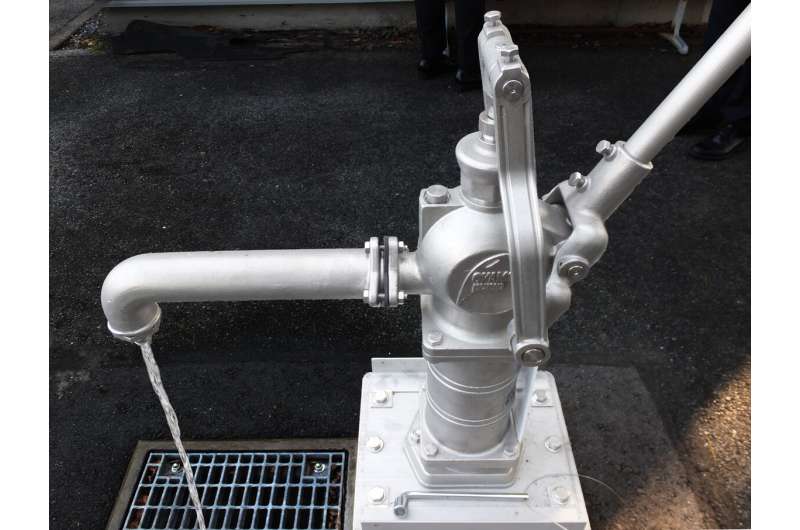Water cutoff countermeasures using disaster emergency wells

In recent years, large-scale natural disasters around the world have caused a series of water cutoffs, which seriously affect the quality of life of disaster victims. To address this, there has been growing interest in the viability of disaster emergency wells to mitigate water cutoffs during natural disasters.
A research group led by Professor Takahiro Endo from the Graduate School of Sustainable System Sciences at Osaka Metropolitan University conducted surveys of local well owners who supplied groundwater (91 organizations) and welfare facilities representing water users (328 facilities) that were affected by the 2016 Kumamoto Earthquake. The surveys clarified the status of groundwater use after the earthquake for suppliers and users, as well as policy issues surrounding the use of emergency wells. The findings are published in the Hydrogeology Journal.
“Groundwater has been considered an important resource for both industrial production and the natural environment, but this research has newly clarified that groundwater is also a disaster prevention resource,” explained Professor Endo.
Although there have been previous studies of groundwater use in disasters, most of these studies assessed future disasters, such as groundwater exploration techniques and estimation of groundwater availability in the event of water supply cutoffs. Groundwater is primarily provided during the chaotic period immediately after a disaster through private wells, which are scattered throughout the affected area. This makes keeping official records of groundwater usage difficult. So, up until now, emergency well usage after earthquakes was not thoroughly understood.
The surveys found that the use of emergency wells complemented the Kumamoto city government’s emergency water supply by speeding up water delivery and improving access to water. On the other hand, a reasonable number of welfare facilities did not use water from emergency wells, even when they were nearby. This indicates that publicizing emergency well locations is an important policy issue.
“This new data is very useful for city governments who have already installed or are considering installing emergency wells in the near future,” Professor Endo concluded.
More information:
Takahiro Endo et al, Groundwater as emergency water supply: case study of the 2016 Kumamoto Earthquake, Japan, Hydrogeology Journal (2022). DOI: 10.1007/s10040-022-02547-9
Provided by
Osaka Metropolitan University
Citation:
Water cutoff countermeasures using disaster emergency wells (2022, November 4)
retrieved 4 November 2022
from https://phys.org/news/2022-11-cutoff-countermeasures-disaster-emergency-wells.html
This document is subject to copyright. Apart from any fair dealing for the purpose of private study or research, no
part may be reproduced without the written permission. The content is provided for information purposes only.
For all the latest Science News Click Here
For the latest news and updates, follow us on Google News.

